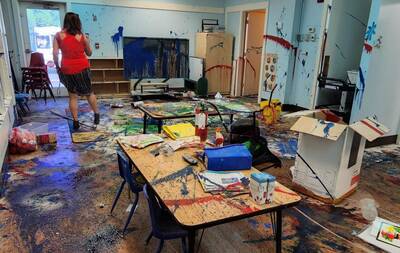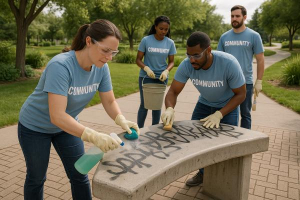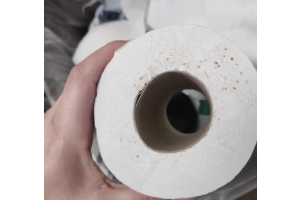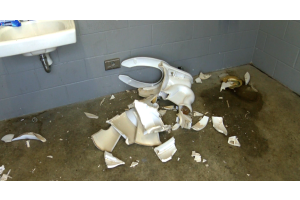7 Effective Strategies to Prevent Vandalism in Public Schools

Vandalism in public schools goes beyond just a few scribbles on the wall. It's a serious issue that affects the safety, aesthetics, and overall culture of a campus. From shattered mirrors and ripped soap dispensers to graffitied lockers and damaged restrooms, vandalism drains school budgets and sends a negative message to students. But with the right tools, design choices, and engagement strategies, schools can significantly reduce — if not eliminate — these incidents. Here's how to turn your campus into a safe, clean, and respected environment using seven actionable strategies.
1. Invest in Vandal-Resistant School Furnishings
One of the most common targets for vandals is the school restroom. From broken toilet paper holders to cracked mirrors and pried-off soap dispensers, traditional fixtures simply don't hold up in high-risk environments. That’s why vandal-resistant furnishings are not just a good idea — they’re essential.
Look for products made from 12-gauge or 16-gauge stainless steel, like those offered by Vandal Stop, which are engineered to withstand abuse. Tamper-proof fasteners, recessed designs, and welded construction make it nearly impossible for students to break or remove these fixtures without serious effort — and that alone acts as a deterrent.
Additionally, installing framed, shatterproof polycarbonate or acrylic mirrors in place of traditional glass can eliminate one of the most commonly destroyed items in school restrooms. These materials resist scratching and don’t break under impact, which keeps facilities safer and cuts down on replacement costs.
Bonus Tip:
Include small signage that reads “This facility is equipped with anti-vandalism technology and monitored for maintenance.” Even a subtle message reinforces that your school takes these issues seriously.
2. Install Advanced Surveillance Systems

Surveillance isn’t just about catching vandals — it’s about preventing the crime in the first place. When students know they’re being monitored, they’re significantly less likely to engage in destructive behavior. And with modern surveillance options, schools don’t have to rely on grainy footage or blind spots anymore.
High-resolution, tamper-resistant cameras should be installed in hallways, entry points, parking lots, stairwells, and the entrances to restrooms (not inside, for privacy compliance). The cameras should include features like night vision, motion alerts, and cloud-based storage to ensure footage is available when needed — even in the event of local system failure.
Couple this with access control systems to track student movement in and out of sensitive areas, and you now have a comprehensive tool not just for prevention, but also for accountability and follow-up investigations.
Pro Tip:
Make sure your cameras are paired with visible signage that notes the presence of surveillance. This alone can cut down incidents by over 60% in some districts.
3. Ensure Adequate Campus Lighting

Lighting is one of the most underestimated tools in deterring vandalism. Vandals thrive in darkness — whether it's behind a gym, in an alley next to the cafeteria, or even in dimly lit restrooms. Poor lighting not only enables these actions but makes it harder to identify and stop them.
LED lighting with motion sensors is a powerful combination. It reduces energy costs while making would-be vandals think twice when a bright light suddenly turns on. Well-lit campuses also increase the effectiveness of your surveillance system by improving footage clarity at night.
Conduct a nighttime walk-through of your campus with security staff to identify vulnerable areas. Light poles, pathway lights, and enclosed fixtures near doors and restrooms can dramatically improve safety and reduce incidents.
4. Promote Student Ownership and Involvement

Sometimes the best way to fight vandalism is through the student body itself. When students feel disconnected, it's easier for them to rationalize damage as "just school property." But when they have a hand in shaping, beautifying, and protecting that space — things change.
Start by involving students in visual improvements to the campus: murals, landscaping, and peer-led cleanliness campaigns. Art and design classes can “adopt a wall” and create graffiti-style murals in designated spaces. Leadership groups can conduct walkthroughs to identify and report damage. Some schools even create “respect squads” — student teams that encourage peers to keep restrooms and shared spaces clean.
When students are made part of the solution, not just the problem, the culture starts to shift from apathy to pride.
Quote:
"Ever since we let the students help design the hallway murals, we haven’t had a single incident of tagging or paint damage in those areas." — Vice Principal, Fremont High School
5. Implement Prompt Maintenance and Repairs

Vandalism begets vandalism — especially if it’s not addressed quickly. If a student tags a wall and that tag remains for weeks, others are likely to join in. It creates a message that damage is tolerated. To counter this, schools need to implement a policy of rapid repair.
Within 24 hours, any vandalism should be removed, painted over, or replaced. That sense of urgency sends a message: this school takes pride in itself. Staff and administrators should also be trained to report damage immediately so the maintenance team can respond.
Installing fixtures that are easy to maintain — like Vandal Stop's units with replaceable internal parts and anti-graffiti coatings — ensures that maintenance is fast, effective, and doesn’t disrupt the school day.
6. Apply Anti-Graffiti Coatings to Vulnerable Surfaces

Walls, bathroom stalls, lockers, and even desktops are common targets for graffiti. Anti-graffiti coatings form a clear, durable layer that prevents paint, markers, and even etching tools from causing permanent damage. Cleanup becomes as easy as a quick wipe-down.
There are two main types of coatings: sacrificial and non-sacrificial. Sacrificial coatings must be reapplied after cleaning, while non-sacrificial coatings are more permanent and can be cleaned repeatedly without reapplication. For high-traffic schools, non-sacrificial options offer the best long-term protection.
Using these coatings in tandem with routine inspections and quick cleanup keeps your campus looking fresh and reduces the temptation for future vandalism.
Did You Know?
According to the National Institute of Justice, areas treated with anti-graffiti coatings experience 50–75% fewer repeat incidents of vandalism.
7. Utilize Crime Prevention Through Environmental Design (CPTED)

CPTED is a framework that uses the physical design of spaces to reduce opportunities for crime. In the context of schools, this means structuring the environment in a way that encourages positive behavior and discourages mischief.
Examples include:
- Keeping landscaping low to preserve clear sightlines
- Using fencing to direct movement and restrict access to certain areas after hours
- Creating natural surveillance by placing windows or staff offices near common gathering areas
- Installing clear signage that designates public vs. private spaces
When students feel that an area is "owned" and monitored — even passively — they are far less likely to deface or damage it. CPTED isn't just for new buildings; schools can apply these principles in renovations and retrofits.
Conclusion: A Holistic Approach to Preventing Vandalism
Preventing vandalism in high schools isn’t about a single solution — it’s about creating a culture. A culture of respect, accountability, and proactive planning. By combining vandal-resistant products, student empowerment, responsive maintenance, and smart design, schools can reclaim their spaces and redirect resources from repairs to what really matters: education.
At Vandal Stop Products, we partner with schools across the country to provide long-lasting solutions designed for high-abuse environments. Explore our full line of anti-vandalism fixtures and protect your investment in education today.






